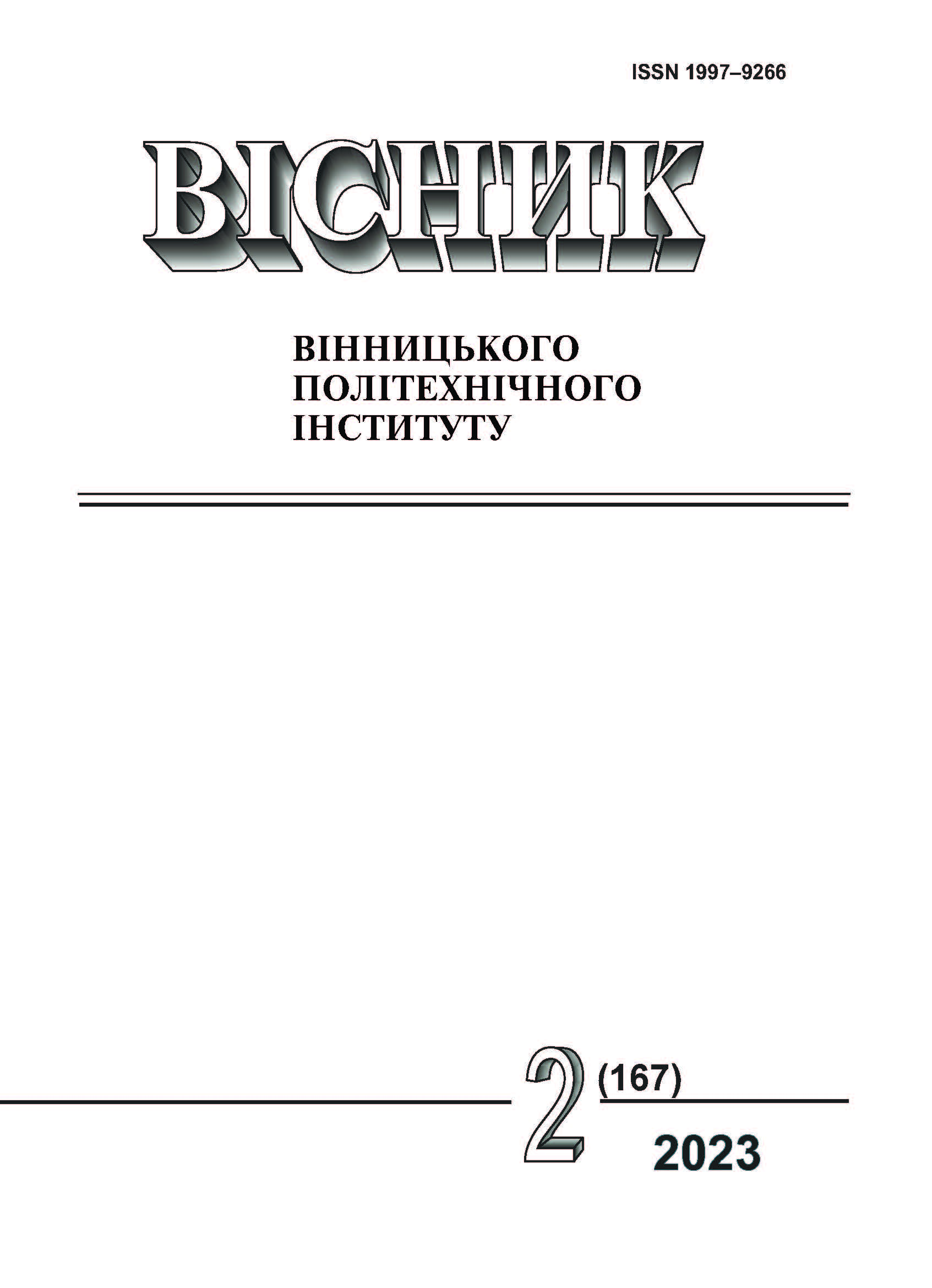Intellectual Information System for Recognition and Food Product Composition Analysis
DOI:
https://doi.org/10.31649/1997-9266-2023-167-2-66-71Keywords:
food product, product composition, E-additives, recognition system, neural networks, programming, software applicationAbstract
Taking into account the long-term COVID-19 effects, doctors have suggested a specific diet, as quality foods are important for a healthy lifestyle, as well as fighting with various chronic diseases. Advances in technology encourage manufacturers to increase profits and reduce production costs by using flavorings and specific food additives (E-additives), as well as their synthetic combinations, each of which has a number of features. The international collection of food standards Codex Alimentarius includes a list of about 500 types of original E-additives, which can be natural, identical to natural or synthetic. A number of such additives have a negative effect on the human organism, some of them have not been fully researched, that potentially creates the risk of genetic mutations and, accordingly, autoimmune and carcinogenic effects in the future. That is why it is important for the buyer of a certain food product to quickly identify the product composition, analyze the relevant additives in it, their dangers “online” at the storefront using mobile devices and the Internet.
Recently, modern developments have been considered through the prism of artificial intelligence, accordingly, such models, which will be oriented to work with food products, will help support people’s desire for healthy food. This article briefly describes the developed intelligent information system, which, to achieve the goal, applies machine learning models on a database with food products, a barcode scanner with an additional correction procedure, if it is highly damaged, a regular expression apparatus, a text similarity metric, and also a product rating system. The corresponding software application works in three modes on the iOS and Android platforms: product recognition, barcodes recognition, composition analysis and product evaluation. The program allows buyer to get information about the product, its composition, an additives list, scientific information on them, the rating of the product “usefulness”, its comparison with similar products, etc.
References
А. В. Бабюк, та ін., Безпека харчування: сучасні проблеми. Чернівці, Україна: Книги-ХХІ, 2005, 454 с.
C. В. Нагірний, Я. Г. Бондарєв, і Л. В. Нечволода, «Використання нейромережевих технологій у системах розпізнавання образів для оцінювання безпечності продуктів харчування,» на Міжнародній науковій конференції Ком¬п’ютерні технології обробки даних, 2020, с. 40-43.
Т. B. Kumar, et al., “A Novel Model to Detect and Classify Fresh and Damaged Fruits to Reduce Food Waste Using a Deep Learning Technique,” Journal of Food Quality, pp. 1-8, 2022. https://doi.org/10.1155/2022/4661108 .
ISO 22000 : 2005. Системи управління безпечністю харчових продуктів – Вимоги до будь-яких організацій харчового ланцюга. [Електронний ресурс]. Режим доступу: http://www.codexalimentarius.net . Дата звернення: 26.01.2022.
А. А. Дубініна, Токсичні речовини у харчових продуктах та методи їх визначення. Київ, Україна: Професіонал, 2007, 375 с.
В. І. Смоляр, «Сучасні проблеми використання харчових добавок,» Проблеми харчування, Київ, Україна: Інститут екології і токсикології імені Л. І. Медведя, с. 5-13, 2009.
О. Кратко, і М. Янків, «Вивчення небезпечного впливу продуктів харчування на здоров’я людини,» Грааль науки, № 1, с. 167-170, 2021.
K. Shiraly, “AI in Nutrition: How Technology is Transforming what We Eat,” [Electronic resource]. Available: https://www.width.ai/post/ai-in-nutrition. Accessed: 20.03.2023.
Open Food Facts. [Electronic resource]. Available: https://play.google.com/store/apps/details?id=org.openfoodfacts.scanner. Accessed: 20.03.2023.
FoodVisor. [Electronic resource]. Available: https://www.foodvisor.io/. Accessed: 20.03.2023.
Сканер їжі. [Electronic resource]. Available: https://play.google.com/store/apps/details?id=food.scanner&hl=uk. Accessed: 20.03.2023.
Yu.Yu. Ivanov, D. O. Kruts, and H. B. Rakytyanska, “An Algorithm for Training Artificial Neural Network Based on Adaptive Moments Estimation,” на Мiжнародній науково-практичній Інтернет-конференції Електронні інформаційні ресурси: створення, використання, доступ, Суми/Вiнниця, Україна: НІКО / ВНТУ, 2022, c. 117-119.
A. A. N. Tato, and N. Nkambou, “Improving ADAM Optimizer,” in International Conference on Learning Representations, 2018, pp. 1-4.
ISO/IEC 18004 : 2015. Estonian Centre for Standardization. [Electronic resource]. Available: https://www.evs.ee/ products/iso-iec-18004-2015. Accessed: 26.01.2023.
T. K. Moon, Error Correction Coding: Mathematical Methods & Algorithms, John Wiley & Sons, 2005, 750 p.
V. V. Pivoshenko, and Yu.Yu. Ivanov, “Method for Recognition Highly Corrupted Barcodes,” на VIII Міжнародній конференції з оптико-електронних інформаційних технологій “Photonics-ODS”, Вiнниця, Україна: ВНТУ, 2018, с. 55.
F. Lopez, and V. Romero, Mastering Python Regular Expressions. Packt Publishing, 2014, 110 p.
Yu. S. Zditovetskyi, O. V. Bisikalo, and Yu. Yu. Ivanov, “Overview and Numerical Examples of the Text Similarity Metrics,” in Scientific and practical international conference “Science and Technology: Problems, Prospects and Innovations,” Osaka, Japan: CPN Publishing Group, 2022, pp. 184-188.
F. Zammetti, Modern Full-Stack Development: Using TypeScript, React, Node.js, Webpack, and Docker. APress, 2020, 396 p.
A. Yudin, Building Versatile Mobile Apps with Python and REST: RESTful Web Services with Django and React. APress, 2020, 364 p.
Downloads
-
PDF (Українська)
Downloads: 184
Published
How to Cite
Issue
Section
License

This work is licensed under a Creative Commons Attribution 4.0 International License.
Authors who publish with this journal agree to the following terms:
- Authors retain copyright and grant the journal right of first publication.
- Authors are able to enter into separate, additional contractual arrangements for the non-exclusive distribution of the journal's published version of the work (e.g., post it to an institutional repository or publish it in a book), with an acknowledgment of its initial publication in this journal.
- Authors are permitted and encouraged to post their work online (e.g., in institutional repositories or on their website) prior to and during the submission process, as it can lead to productive exchanges, as well as earlier and greater citation of published work (See The Effect of Open Access).





